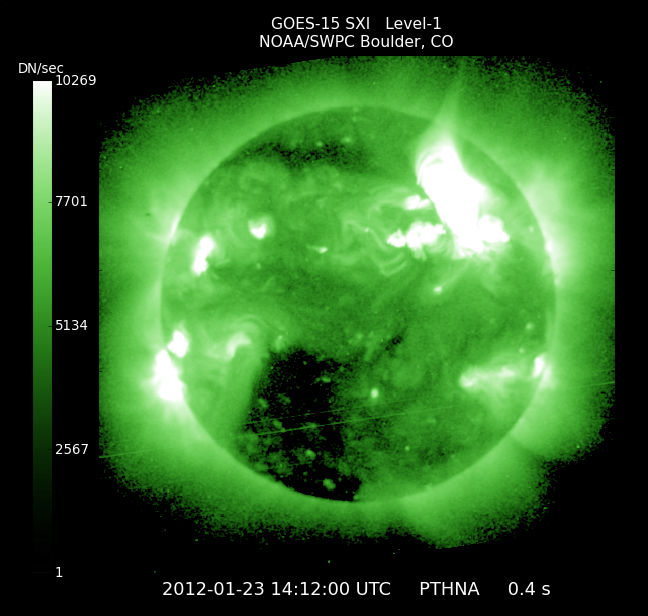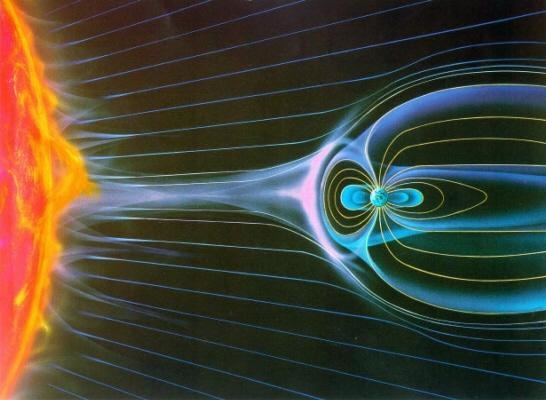Solar data
Besides the observations from OGAUC's spactroheliograph here we can also find other observables of interest in the monitoring of space weather conditions.
Solar x-ray fluxes, like those recorded by the GOES satellites, are used to track solar activity, particularly in respect to the occurrence of solar flares. Strong solar flares can disrupt layers of the ionosphere, blocking high frequency radio transmissions on the side of the Earth facing the Sun. Likewise, solar flares can be accompanied by strong radio bursts which can interfere with satellite communication and navigation systems. Some solar flares are associated with the occurrence of coronal mass ejections, which on their own turn can lead to geomagnetic storms.

Sun in x-rays.
(source: NOAO/SWPC)

Rendering of solar storm hitting Mars
(source: NASA)
High energy particle fluxes measured by satellites such as GOES and ACE, are good indicators of the level of solar activity and, particularly, of the occurrence of coronal mass ejections. High fluxes of solar energetic particles correspond to the space weather event known as Solar Radiation Storm. Severe solar radiation storms can disrupt satellite operations (and even damage them permanently), affect high frequency communications and navigation systems (such as GNSS) an increase the radiation risks to passengers at high latitude flights.
The monitorization of the solar wind provided by satellites such as the Advanced Component Explorer (ACE) is fundamental for the forecast of geomagnetic conditions since high speed winds can originate minor to moderate geomagnetic storms. Likewise, the monitorization of large coronal holes, seen as the dark patches in the x-ray and extreme ultraviolet imagery, allows to expect disturbed geomagnetic conditions since the magnetic structure in these areas of the Sun allows the solar wind to escape with higher velocities.

Interaction between the solar wind and Earth's magnetosphere.
(source: ESA)
Solar parameters such as the 10.7 cm solar radio flux, the sunspot number or the extent of solar plages are good indicators of the degree of solar activity. The probability of occurrence of intense space weather events is proportional to the degree of solar activity.
Finally, it is important to remember that solar irradiance (i.e. the energy received by the Sun) is proportional to the level of solar activity. Thus the monitorisation of the latter one is fundamental for the understanding and forecasting our planet's climate.


